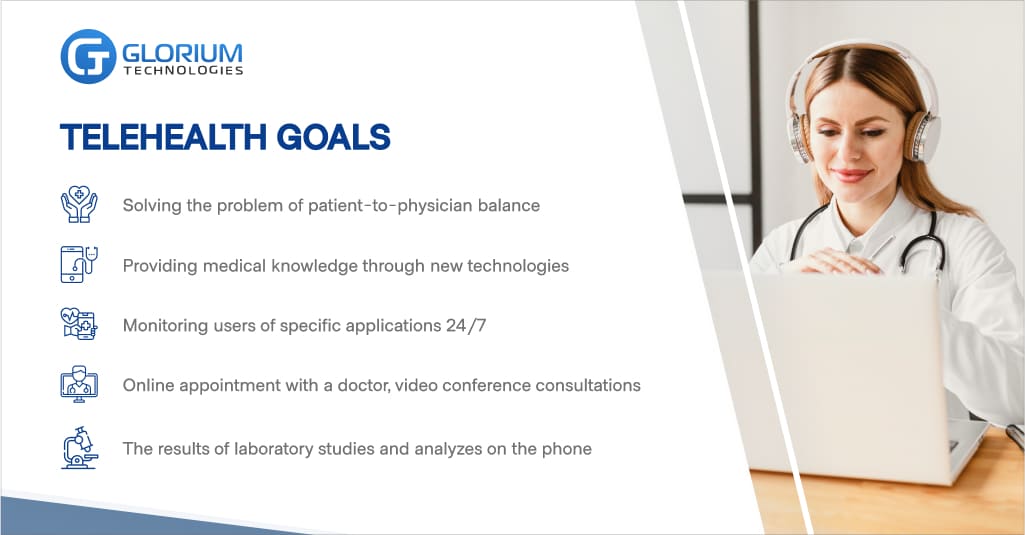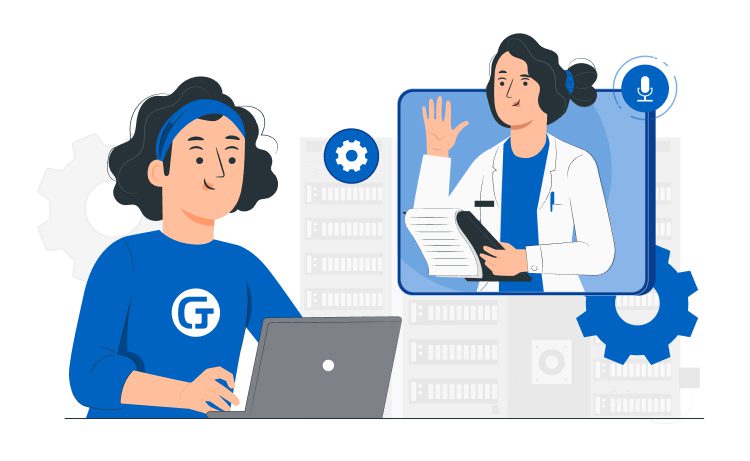
Future of Virtual Healthcare: mHealth Apps, Telehealth, Virtual Care



Traditional medicine has faded into the background due to the coronavirus and the increased risk of hospital infection. The projected global digital health market is to reach $500 billion by 2025.
The COVID-19 pandemic has accelerated the introduction of telemedicine IT solutions around the world. So, India shows the rapid development of teleophthalmology by 700%, as the number of teleconsultations on ENT and orthopedic issues increased by 600% and 400%, respectively.
The healthcare system is becoming hybrid, combining virtual and personal care. What results will it achieve in the future?
Content

Virtual healthcare involves conducting audio and video visits for medical consultations and patient check-ups. This medical solution informs, personalizes, and accelerates treatment.
Software vendors offer AI-powered applications for checking symptoms and controlling allergic reactions. For example, hypertension (Philips) or skin diseases (DermTech).
Patient wearables can sync with EHR systems and other platforms to automatically transfer data to medical staff.
Health technologies help to track medication intake and receive test results on portable devices. Patients can manage chronic conditions such as diabetes, asthma, high blood pressure, and others.
For example, the Fooducate app provides virtual care and lifestyle follow-up to users.
Patients often need treatment for conditions such as anxiety and depression after prolonged quarantine. The pandemic also affected healthcare workers, who are experiencing increased pressure and stress.
For example, the Unmind app offers exercises to focus and improve employee mood.
Initially, healthcare systems used platforms such as Microsoft Teams and Zoom to connect. Then, new solutions for consulting and tracking research were created.
Healthcare mobile apps have revolutionized healthcare delivery options. The number of medical apps downloaded in January 2020 increased by 65% compared to the “peak” month of the COVID-19 crisis.
South Korean users were the most active, downloading 135% more software than in January.

According to surveys of healthcare providers, the main reasons for using e-health applications or devices are:
Health apps display the pros and cons of telemedicine by showing the patient their condition. Medical devices that connect to mobile applications include pulse oximeters, glucometers, ECG monitors, neurological monitoring devices, and others.
Telemedicine technology solutions help improve the efficiency of doctors and simplify the delivery of services to patients. Below are examples of apps that can help you calculate risk, prevent disease, and support your users.
The app is used by healthcare professionals and medical students to assess risks and perform calculations. It helps identify more than 130 diseases using a database of treatment instructions. Available in 2 versions: mobile and desktop.
The tool allows you to assess the risks of stroke in the next 5-10 years. After analysis, it provides tips to reduce the probability of a heart attack. The app also detects signs of dementia and diabetes.
The platform collects blood glucose data and provides online support. It manages the user’s medications, sets reminders, and provides a recipe base for healthy eating.
Application for online consultation between doctors and patients. They use video calling, chats, and audio messaging. Platform’s features include billing, electronic prescriptions, and electronic health records management.
Telehealth refers to the introduction of telecommunications products to exchange information and provide health services. Initially, its use has grown almost 40 times compared to before COVID-19 and has stabilized at a high level.
A virtual visit includes simple (videoconferencing) and complex actions (conducting analytics).


As experts state, US investment in digital health reached nearly $15 billion in the first half of 2021, exceeding 2020 and 2019.
Why do countries invest so much money in this area?
Let’s look at the main benefits that doctors and patients receive from new health management technologies.
According to Deloitte’s survey, most care, prevention, and wellness services will move to a virtual environment by 2040.
Telehealth has the technological potential for treating depression and chronic diseases, weight management, and glucose control. Patients with oncology will receive virtual assistance from the medical staff without having to visit the hospital.
Treatment of the musculoskeletal system will become easier with wearable devices connected to digital physiotherapy platforms.
The pandemic remains the main reason for developing a remote monitoring and direct communication channels between health service providers.
After the end of quarantine, the healthcare sector will transform, keeping integrating technology and creating new rules. Are you and your company ready to improve performance and get effective results from innovation?









| Cookie | Duration | Description |
|---|---|---|
| cookielawinfo-checkbox-analytics | 11 months | This cookie is set by GDPR Cookie Consent plugin. The cookie is used to store the user consent for the cookies in the category "Analytics". |
| cookielawinfo-checkbox-functional | 11 months | The cookie is set by GDPR cookie consent to record the user consent for the cookies in the category "Functional". |
| cookielawinfo-checkbox-necessary | 11 months | This cookie is set by GDPR Cookie Consent plugin. The cookies is used to store the user consent for the cookies in the category "Necessary". |
| cookielawinfo-checkbox-others | 11 months | This cookie is set by GDPR Cookie Consent plugin. The cookie is used to store the user consent for the cookies in the category "Other. |
| cookielawinfo-checkbox-performance | 11 months | This cookie is set by GDPR Cookie Consent plugin. The cookie is used to store the user consent for the cookies in the category "Performance". |
| viewed_cookie_policy | 11 months | The cookie is set by the GDPR Cookie Consent plugin and is used to store whether or not user has consented to the use of cookies. It does not store any personal data. |